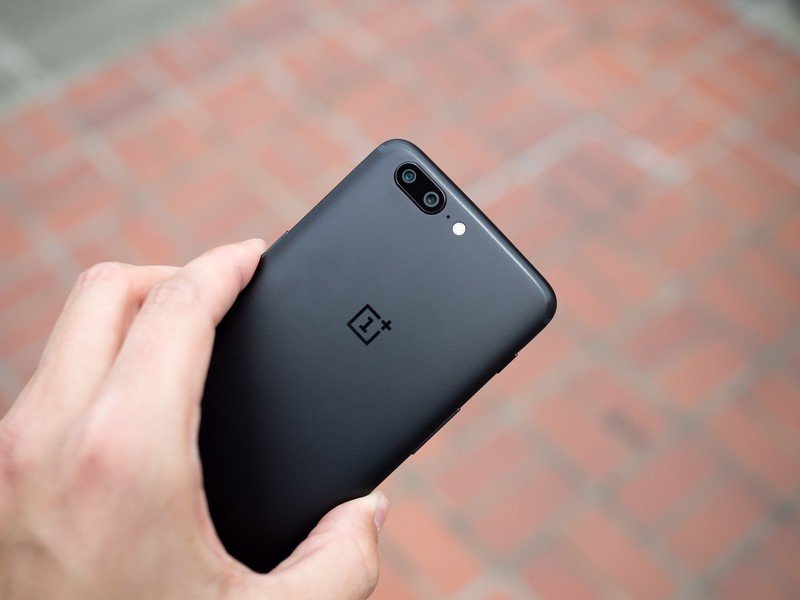There's a single OnePlus 5 version for the whole world

The OnePlus 5 is here, and it's a pretty great device in a lot of ways. But in terms of network connectivity, it breaks down interesting new ground, and finds itself among a select few devices that takes advantage of some of the Snapdragon 835's latest advances.
Here are the biggest takeaways from the device that is available to purchase right now.
Every model comes unlocked out of the box
Like all previous OnePlus devices, the OnePlus 5 comes unlocked out of the box. This means that as long as it supports a particular network, you'll be able to put in your SIM card and it will just work. If the network is really obscure, you may have to enter the APN information manually, but those are edge cases and shouldn't apply to the vast majority of users.
What is an APN and how do you change it?
It's dual-SIM
The OnePlus 5 has two SIM slots, which for many Americans will be an unusual inclusion but for millions of others it will be essential. Both SIM cards can operate at 4G LTE speeds which is nice, and Android can dynamically switch between them if necessary. Flexibility FTW!
There's only one version for the entire world

This is really neat. The OnePlus 5 is only being released in one version for the entire world, which means that the version sold to Americans is physically the same hardware as the one sold in China, India and South Africa. This is a big deal. Last year's OnePlus 3T had two distinct versions for the U.S. and Europe/Asia, and the LTE bands were largely not compatible between the two regions, which made it difficult to roam.
Now, the OnePlus 5 has 34 distinct cellular bands, covering at least one band in every country — in one piece of hardware. That's pretty impressive.
Be an expert in 5 minutes
Get the latest news from Android Central, your trusted companion in the world of Android
It's only meant to work on AT&T and T-Mobile in the U.S.
The OnePlus 5 may have 34 distinct cellular bands, but none of them form explicit compatibility with Verizon or Sprint in the U.S. Instead, the phone has been developed with AT&T and T-Mobile users in mind, and it will work flawlessly out of the box with both of them.
It has even been optimized for T-Mobile's Advanced Calling features, including VoLTE (Voice over LTE) and VoWiFi (Voice of Wi-Fi), which are configured and enabled out of the box. Just pop in a T-Mobile SIM and it should work.
So no Verizon compatibility?

Nope. It may look that way because the phone technically supports one of Verizon's legacy CDMA frequencies and a handful of its LTE bands, but OnePlus has no intention of ever officially supporting Verizon.
Turn a bunch of technical jargon into English for me
From a network perspective, the OnePlus is more about efficiency than speed.
Sure! The OnePlus 5 supports download speeds of 600Mbps and upload speeds of 150Mbps thanks to the use of 3x carrier aggregation, 256QAM and 2x2 MIMO.
Let's break things down: carrier aggregation is the combination of three separate "channels" of airwaves into a single stream of data. It forms the foundation of the LTE-Advance standard, and makes it possible for phones to come close to those "gigabit" speeds that we've seen in recent marketing.
256QAM is the modulation, or shape, the data forms. Think of it as a ones and zeroes packed really tightly together into a box; the more tightly packed the data, the more information the box can store.
And finally, 2x2 MIMO indicates the number of antennas in the phone that can send and receive data at the same time. Other phones like the Galaxy S8 and HTC U11 support 4x4 MIMO, which together with 3x carrier aggregation and 256QAM can achieve download speeds of close to 1,000Mbps, or 1Gbps.
Does this matter in the real world?
Will you notice a difference in download speeds between the OnePlus 5 and Galaxy S8 on the same network? Maybe, but only in artificial speed tests, since real-world usage maxes out at speeds much lower than even the OnePlus 5's theoretical maximum.
At the same time, it's unfortunate that OnePlus chose not to try to implement 4x4 MIMO, which from an engineering perspective is admittedly quite hard to do, but would have been great for its speed-focused marketing to include gigabit cellular.
What about Wi-Fi? Bluetooth?

Here there's some good news. The OnePlus 5 supports 2x2 MIMO, dual-band (2.4/5GHz) 802.11ac Wi-Fi, which is among the fastest you can find in a device today. It also supports the nascent Bluetooth 5.0 standard, which has no hardware support at this point, but this should future-proof the phone for when speakers, smartwatches and other gadgets beginning including the new wireless tech.
It also supports aptX and aptX HD audio codecs, which is great for those (like me) who use Bluetooth headphones and want to eke the best-possible sound quality.
Anything else cool?
Yes! The OnePlus 5 is actually the first phone from a Chinese manufacturer to support Envelope Tracking and closed-loop Antenna Tuning, two technologies that, relatively new to the industry, maintain high signal quality while keeping battery use down and prevent the dreaded "death grip" that older devices used to suffer from.
So what's the takeaway here?
The OnePlus 5 is one of the most advanced phones on the market from a network perspective, and manages to reinforce the company's strategy of simplicity by building one model for the entire world. Even Samsung and Apple, with its enormous resources, haven't managed to do that. Sure, OnePlus alienates a few networks in the process — Verizon and Sprint, in particular — but this is as worldwide a phone as it comes these days.
Daniel Bader was a former Android Central Editor-in-Chief and Executive Editor for iMore and Windows Central.

